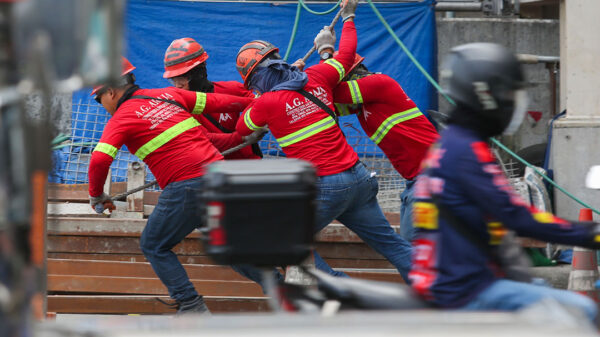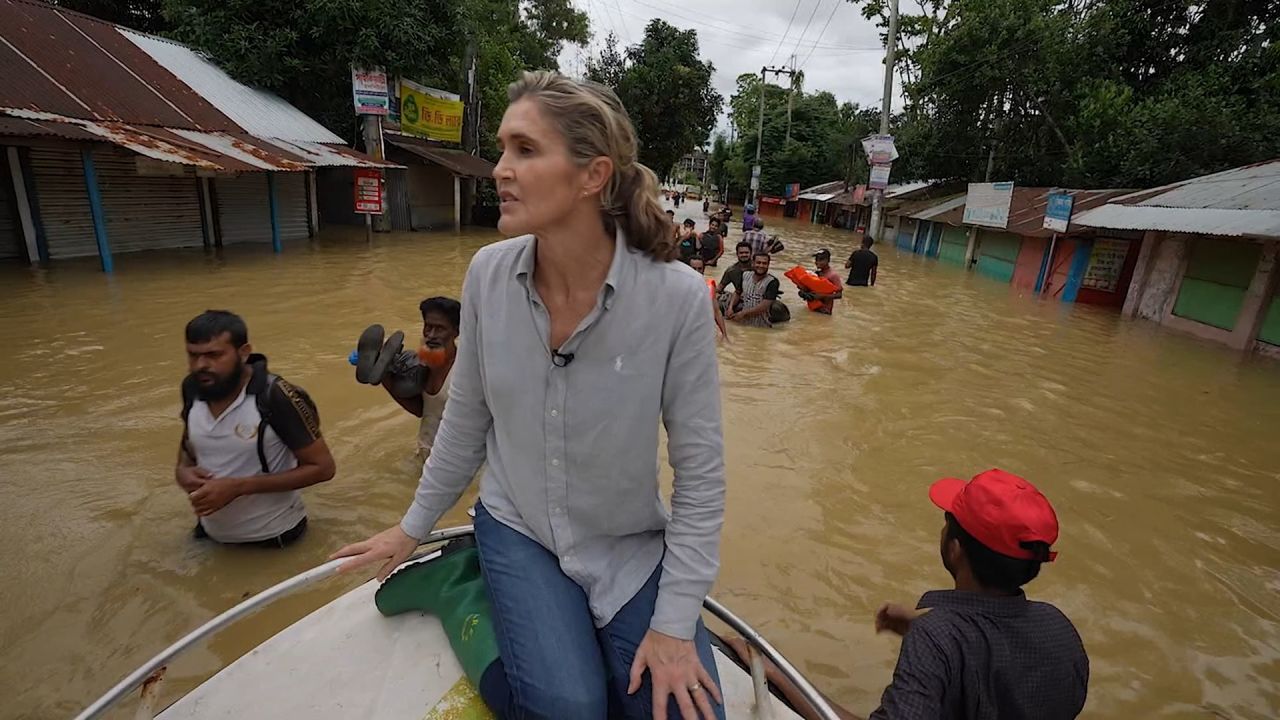Introduction: Devastating Floods in Bangladesh
Bangladesh has recently faced one of its most devastating natural disasters—widespread flooding that has inundated vast swaths of the country. Caused primarily by torrential monsoon rains and exacerbated by river overflow, this disaster has brought catastrophic consequences to millions of people. The floodwaters have submerged homes, destroyed crops, and disrupted daily life, rendering entire communities vulnerable and desperate for aid.
According to reports, approximately one-third of Bangladesh’s land area was underwater at the height of the flooding. This affected an estimated 20 million people across multiple regions. Particularly hard-hit were the low-lying areas where rivers are prone to overflowing. Infrastructure was severely impacted, with roads and bridges washed away, complicating rescue and relief efforts.
The immediate impact of these floods cannot be overstated. Families have been displaced, livestock lost, and fertile land rendered unusable for the foreseeable future. Health risks also emerged rapidly, as waterborne diseases like cholera and diarrhea began to spread among the affected populations. The urgency of the situation called for swift action not only from local authorities but also from international humanitarian organizations.
As we delve into the subsequent sections, which provide firsthand accounts and stories of heroic volunteer efforts, it becomes clear just how critical and daunting the rescue missions have been. Understanding the magnitude of this disaster is essential for grasping the underlying challenges faced by both the victims and those striving to bring aid to them. The stories emerging from these calamitous circumstances highlight the resilience and solidarity of the human spirit in times of crisis.
The Volunteers: Heroes on the Front Lines
In times of dire need, when natural disasters strike, it is often the unheralded heroes who rise to the occasion and make a significant impact. Among these heroes are the volunteer rescue boat crews in Bangladesh, individuals who have selflessly devoted their time and energy to aiding their communities during the catastrophic floods. These volunteers come from all walks of life, embodying a diverse array of professions and backgrounds, yet they are united by a common driving force: a deep-seated commitment to help those in need.
One such volunteer is Arun, a schoolteacher by profession, who couldn’t ignore the plight of his fellow citizens after witnessing the devastation caused by the floods. “I couldn’t just sit at home and watch the news. I had to do something,” he recalls. Likewise, Sarah, a medical student, felt compelled to join the rescue efforts after seeing firsthand the lack of medical assistance available to flood victims. She shares, “Saving lives isn’t just about surgery or medicine; sometimes, it’s about physical rescue and providing immediate support.”
The preparations these volunteers undertake are nothing short of remarkable. Training sessions often include basic navigation and boat handling, first aid, and specific techniques for rescuing individuals from floodwaters. They also gather essential supplies such as life jackets, ropes, medical kits, and water purifiers to ensure they are equipped to handle a variety of emergencies.
However, they are keenly aware of the challenges they will face. Navigating the floodwaters is fraught with dangers, from strong currents and submerged debris to the threat of waterborne diseases. Despite these risks, the spirit of volunteerism remains unwavering. “We do it because someone has to,” explains Kamal, another volunteer. “The government and relief organizations are stretched thin. If we don’t step up, more lives will be lost.”
The personal accounts of these volunteers reveal not only their bravery and dedication but also a deep sense of community and compassion. In the face of overwhelming adversity, their stories shine as beacons of hope and resilience, underscoring the importance of individual and collective action in times of crisis.
Rescue Missions: A Day in the Life on the Rescue Boat
The sun barely breaks the horizon as the volunteers gather at the rescue station, preparing for another arduous day. Each member of the team, comprised of local Bangladeshi citizens and international aid workers, knows that the hours ahead will be filled with challenges, both logistical and emotional. As they embark on their mission, the rescue boat slices through murky floodwaters, each ripple a reminder of the treacherous conditions that lie ahead.
Navigating the inundated streets is no small feat. The GPS systems are meticulously checked and rechecked to chart a course through what were once familiar neighborhoods now transformed into a sprawling aquatic maze. The floodwaters conceal a range of hazards—from downed power lines to submerged debris—requiring constant vigilance. The team’s coordination is paramount; the boat’s navigator and pilot communicate seamlessly to avoid these dangers.
The rescue operations begin with the process of locating those in need. Clutching their life jackets and emergency gear, volunteers scan the horizon for signals—waving hands, makeshift flags, or even cries for help. The relief on people’s faces as they are pulled aboard is palpable; for many, it means the difference between life and death. As the crew assists in the retrieval of individuals stranded by the flood, the emotional intensity of the situation grows. Every rescue carries its own weight of gratitude, fear, and hope.
Teamwork plays an indispensable role in these missions. Each volunteer must rely on their peers, trust in their training, and adapt to the ever-changing environment. During a single day, they might face a gamut of tasks—from providing critical first aid to distributing food and water, to comforting those traumatized by the disaster. Amid sporadic cries and chaotic scenes, the volunteers maintain their composure, driven by a shared commitment to save lives.
The dynamic nature of rescue operations demands not only physical endurance but also psychological resilience. Every successful rescue brings a momentary respite, while the thought of many more awaiting aid keeps the team moving forward. By the end of the day, exhaustion is evident on every face, yet there’s an underlying sense of fulfillment that propels them forward, ready to face another day on the rescue boat.
Stories from Survivors: Voices of Resilience
Amidst the devastating floods that befell Bangladesh, countless stories of survival and resilience surfaced, painting a vivid picture of the human spirit during times of crisis. Fatima, a mother of two, recounted the harrowing hours they spent clinging to the remnants of their home. “When the water started rising, I didn’t know what to do. All we could do was pray.” Her words, filled with a blend of fear and hope, highlighted the immediate threats to safety that countless families faced.
Another survivor, Anwar, eloquently described the moment rescue volunteers reached his family. “It was as if the heavens had sent angels to save us,” he said, with palpable relief in his voice. His tale speaks volumes about the critical importance of volunteer rescue efforts. Anwar’s entire home was submerged under floodwaters, yet he found solace in the selfless actions of complete strangers who risked their own lives to save his.
Hasina, an elderly woman, tearfully shared her emotional journey of being torn from her home. “Everything I had worked for my whole life was disappearing under water.” Her testimony sheds light on the immense emotional hardships and loss endured by many victims. She credits her continued survival to the resilience embedded within her community and the unwavering support of rescue teams.
Such first-hand accounts underscore the profound human impact of natural disasters. Amidst their trials, these survivors exhibited a remarkable strength and resilience. Yasir, a young boy who survived the floods, epitomized this spirit. “I lost all my toys, but I am happy my family is safe,” he explained simply, capturing the essence of prioritizing life over material possessions.
These testimonials, delivered in their own words, offer a poignant reminder of both the human cost of natural disasters and the incredible power of human resilience. They illuminate the imperatives of these rescue missions, providing deeply personal insights into the immediate and long-term effects of the floods. The voices of survivors are not just tales of despair; they are powerful narratives of hope, courage, and the unyielding will to rebuild.


































